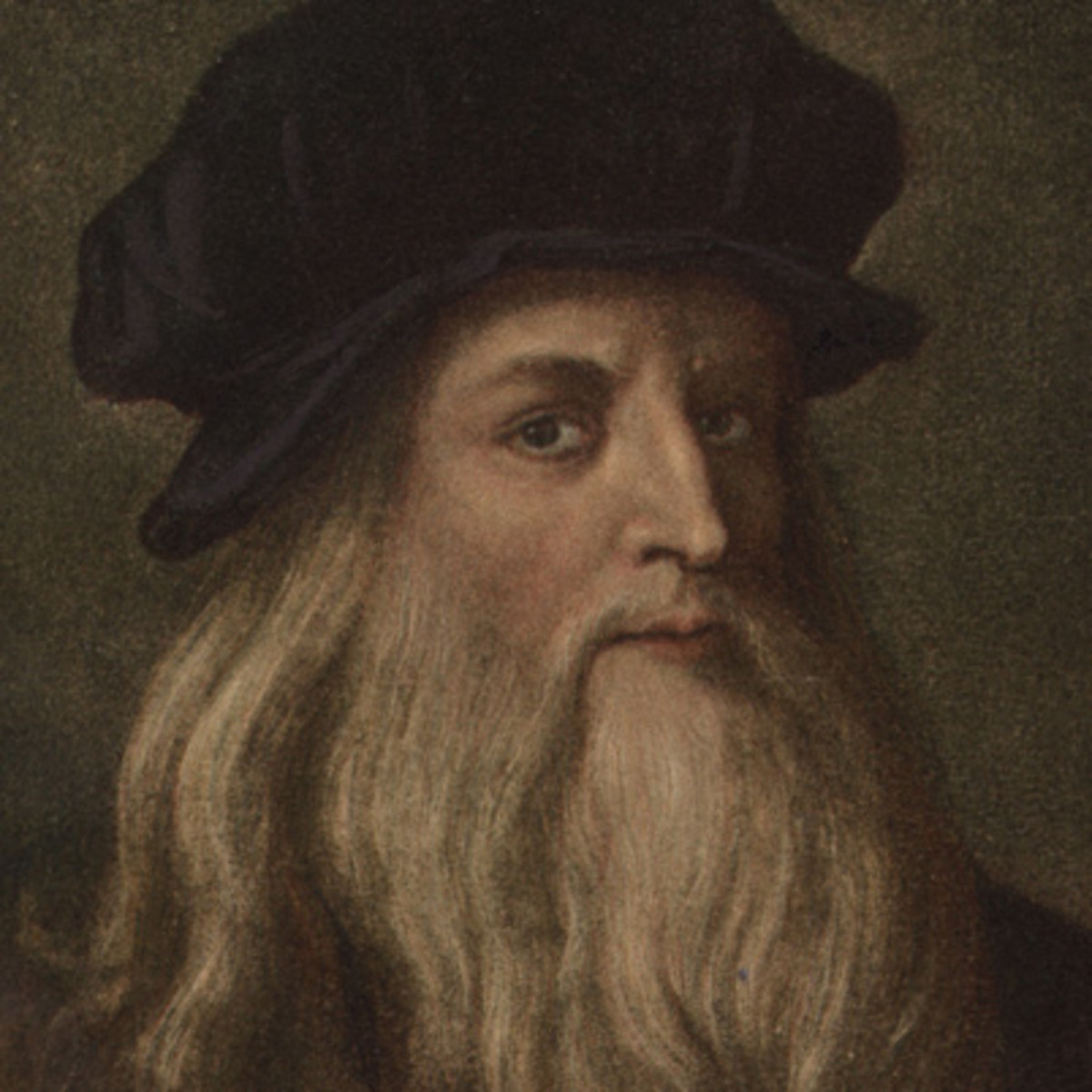
Leonardo da Vinci
Biography
Leonardo da Vinci (April 15, 1452 to May 2, 1519) was a painter, sculptor, architect, inventor, military engineer and draftsman — the epitome of a “Renaissance man.” With a curious mind and keen intellect, da Vinci studied the laws of science and nature, which greatly informed his work. His ideas and body of work have influenced countless artists and made da Vinci a leading light of the Italian Renaissance.
Family, Education and Early Life
Born out of wedlock to respected Florentine notary Ser Piero and a young peasant woman named Caterina, Leonardo da Vinci was raised by his father and his stepmother. At the age of five, he moved to his father’s family estate in nearby Vinci, the Tuscan town from which the surname associated with Leonardo derives, and lived with his uncle and grandparents.
Young Leonardo received little formal education beyond basic reading, writing and mathematics instruction, but his artistic talents were evident from an early age. Around the age of 14, da Vinci began a lengthy apprenticeship with the noted artist Andrea del Verrocchio in Florence. He learned a wide breadth of technical skills including metalworking, leather arts, carpentry, drawing, painting and sculpting. His earliest known dated work — a pen-and-ink drawing of a landscape in the Arno valley — was sketched in 1473.
At the age of 20, da Vinci qualified for membership as a master artist in Florence’s Guild of Saint Luke and established his own workshop. However, he continued to collaborate with his teacher for an additional five years. It is thought that del Verrocchio completed his “Baptism of Christ” around 1475 with the help of his student, who painted part of the background and the young angel holding the robe of Jesus. According to Lives of the Most Excellent Painters, Sculptors and Architects, written around 1550 by artist Giorgio Vasari, Verrocchio was so humbled by the superior talent of his pupil that he never picked up a paintbrush again. Most scholars, however, dismiss Vasari’s account as apocryphal.
In 1478, after leaving Verrocchio’s studio, da Vinci received his first independent commission for an altarpiece to reside in a chapel inside Florence’s Palazzo Vecchio. Three years later the Augustinian monks of Florence’s San Donato a Scopeto tasked him to paint “Adoration of the Magi.” The young artist, however, would leave the city and abandon both commissions without ever completing them.
In 1482, Florentine ruler Lorenzo de' Medici commissioned da Vinci to create a silver lyre and bring it as a peace gesture to Ludovico Sforza. After doing so, da Vinci lobbied Ludovico for a job and sent the future Duke of Milan a letter that barely mentioned his considerable talents as an artist and instead touted his more marketable skills as a military engineer. Using his inventive mind, da Vinci sketched war machines such as a war chariot with scythe blades mounted on the sides, an armored tank propelled by two men cranking a shaft and even an enormous crossbow that required a small army of men to operate. The letter worked, and Ludovico brought da Vinci to Milan for a tenure that would last 17 years. During his time in Milan, Leonardo was commissioned to work on numerous artistic projects as well, including “The Last Supper.”
Final Years
Leonardo returned to Milan in 1506 to work for the very French rulers who had overtaken the city seven years earlier and forced him to flee. Among the students who joined his studio was young Milanese aristocrat Francesco Melzi, who would become da Vinci’s closest companion for the rest of his life. He did little painting during his second stint in Milan, however, and most of his time was instead dedicated to scientific studies.
Amid political strife and the temporary expulsion of the French from Milan, da Vinci left the city and moved to Rome in 1513 along with Salai, Melzi and two studio assistants. Giuliano de’ Medici, brother of newly installed Pope Leo X and son of his former patron, gave da Vinci a monthly stipend along with a suite of rooms at his residence inside the Vatican. His new patron, however, also gave da Vinci little work. Lacking large commissions, he devoted most of his time in Rome to mathematical studies and scientific exploration.
After being present at a 1515 meeting between France’s King Francis I and Pope Leo X in Bologna, the new French monarch offered da Vinci the title “Premier Painter and Engineer and Architect to the King.” Along with Melzi, da Vinci departed for France, never to return. He lived in the Chateau de Cloux (now Clos Luce) near the king’s summer palace along the Loire River in Amboise. As in Rome, da Vinci did little painting during his time in France. One of his last commissioned works was a mechanical lion that could walk and open its chest to reveal a bouquet of lilies.
Leonardo da Vinci died on May 2, 1519, at the age of 67. He continued work on his scientific studies until his death; his assistant, Melzi, became the principal heir and executor of his estate. The “Mona Lisa” was bequeathed to Salai.
For centuries after his death, thousands of pages from his private journals with notes, drawings, observations and scientific theories have surfaced and provided a fuller measure of a true "Renaissance man."
